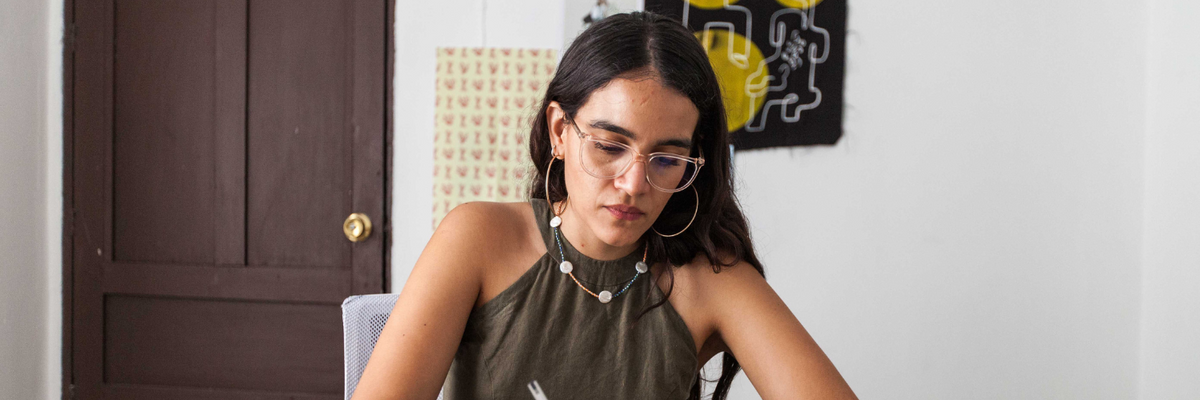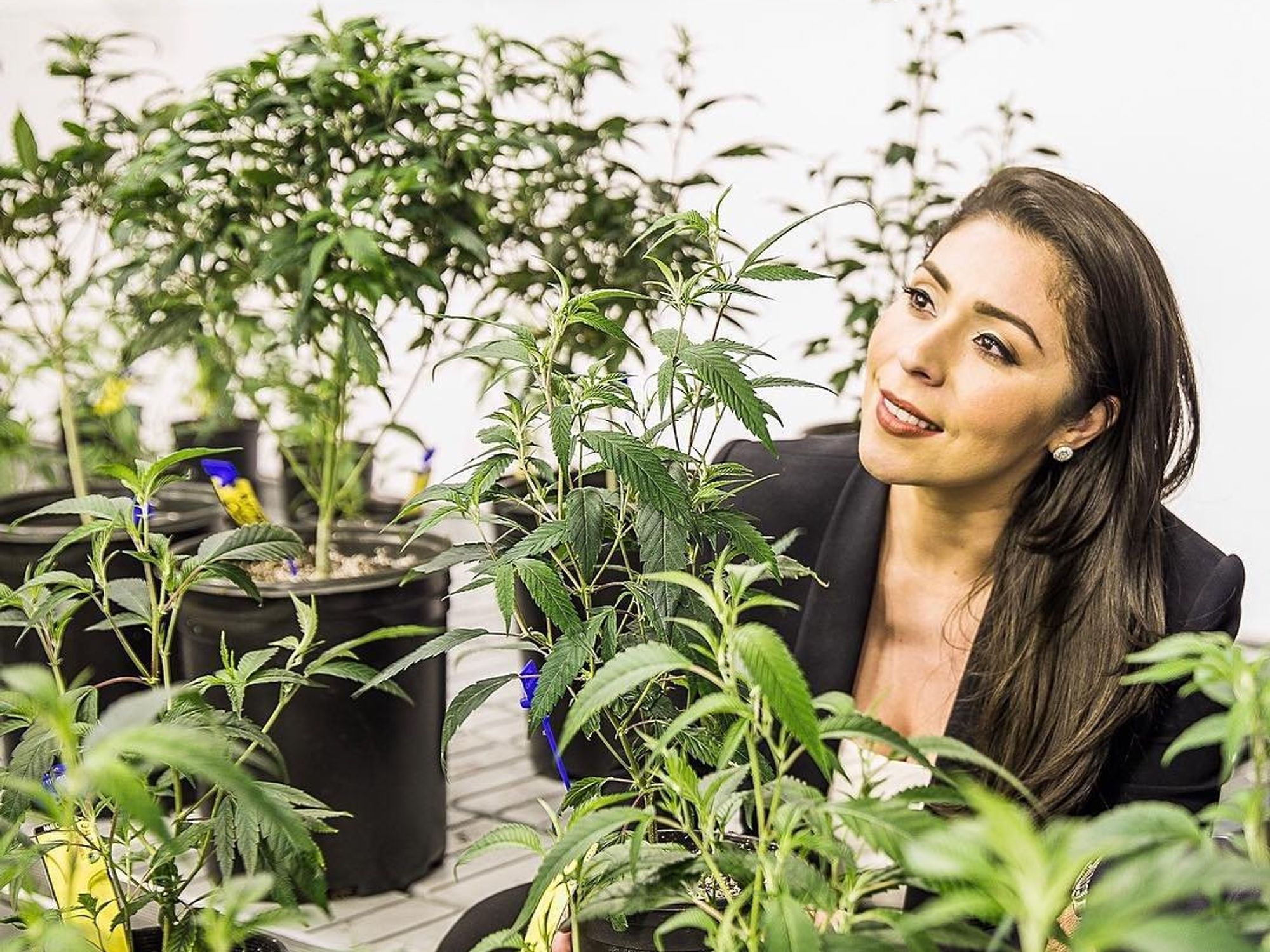For the first time during an interview, Host Aimee Alison interrupted me when I was describing my time in the juvenile justice system.
Normally, in our sound-bite world, I try to get through that part of my life as quickly as possible while still keeping it substantive enough to make my point. The interviewers are happy to oblige the quick pace. But this time around, Aimee said to me, “I want to go back to those cinder-block walls.” For a moment, I was startled but then also hesitant.
At that point in my career, I had talked often about what it was like to be treated like just another number going through the criminal justice system, what it was like to be treated like discarded, worthless cattle to be identified, recorded, and cataloged. But I had never really talked about it, and surprisingly, or maybe not surprisingly, I found it profoundly difficult to do.
The School to Prison Pipeline
I was 12 when I was first tracked into the juvenile justice system — just a little girl, as Aimee pointed out. It started out with acting out behavior like ditching school, shoplifting, and running away as a result of not understanding what was going on at home. Not understanding why my dad beat my mom, and understanding, even at the age of 9 when this was happening, that she had to leave, but never understanding why she chose not to come back for us like she said she would.
I was a good kid. I got good grades. I was in gifted and talented education and even made 1st chair in the orchestra. But my young mind concluded that my mom simply didn’t want me, or my baby brothers, and I didn’t understand why. So I ran away from home. I cut classes. I shoplifted. I turned to the only form of stability that made sense at the time that was available to me— gangs.
The circumstances of my young life were less than ideal — and I say that from the perspective that even though I experienced trauma that no young person should ever know, I also recognize that there are hundreds of thousands of young people who have experienced and are currently experiencing, much deeper and troubling trauma than I ever did. Much like these kids who are growing up in environments that are over-policed and under-resourced, when I cut classes and ran away from home and was caught, the police could have taken me back to school, or done any number of things, but instead, they handcuffed me, threw me in the back of the police car, and took me straight to juvenile detention.
The staff at the detention center could have done any number of things, but instead, I was processed like everyone else was — from murderers to curfew violators, the process was the same. Every last point of contact in the justice system could have done something differently if, in fact, they thought of the children going through the system as young kids with their own stories instead of just files to process.
The process can vary from place to place, bur normally, when you arrive at juvenile detention facility, you're placed in a holding area. Cinderblock walls and cold cinderblock benches line the room. Once someone is available, you're pulled out and taken to a desk where you're fingerprinted, photographed for your mug shot, and asked various intake questions. If you’re lucky and your parents can pick you up quickly, you sit in the holding room until someone picks you up.
I can’t remember a time when those rooms weren’t ice cold—and good luck if you got a blanket. Asking for some comfort never worked. It’s like the rooms were designed to be ice-cold torture rooms, and the staff were happy to carry out the mission. Most of the time my dad couldn’t be reached to pick me up, and when too much time passed, you were changed into an orange or tan inmate jumpsuit in preparation for a longer-term stay. That meant they had to inventory your belongings and strip search you.
The Trauma that Endures
I remember being strip searched. I was old enough to know that my body was private but not old enough to have much to be private about. Another cinder block room and cold floors. “Take off your clothes.” “Hand them to me.” “Do you have any contraband?” “Put these clothes on.” “We’ll be back to get you.” Metal fortified door slammed shut. The slam reverberates.
The process of being institutionalized does something to you. It chips away at your sense of self. Your sense of humanity. Slowly but surely your status begins to feel less than human. Some would argue that it’s supposed to be that way. Some would argue that it’s supposed to be uncomfortable and traumatic. Others would argue and demonstrate that harsh treatment and out-of-home placement of young offenders fails to produce positive outcomes for offending youth. In fact, decades of research prove that our tough on crime policies that produced a generation of felons and shot the U.S. to the number one global spot in prison population are actually costing usmore money and producing less societal benefits.
But statistics and policy aside, how much time do we spend talking about, and thinking about the day-to-day decisions that could possibly change the outcome of the lives of the people who are going through our system? How often do we hear about the prosecutor who treated the defendant like a human being with dignity instead of labeling them “bad guys” before they even got a hearing? How often do we think about the extenuating circumstances of offenders before we assume that all forays into the justice system are as simple as good choice vs. bad choice? How often does the media cover crime stories in the context of indicators that predict a child’s life outcomes? Not often at all.
Why? Because we live in a sound bite world. We live in a world where even my own story has been whittled down to a feel-good, pick yourself up by your bootstraps (a terrible saying, that by literal definition is impossible to do), good ‘ole American success story. A story where “personal responsibility” reigns supreme.
The Bootstrap Myth
In response to the potential for “personal responsibility” co-opting, I spend a lot of time highlighting the decision that my parole officer made not to revoke my parole and send me back into the system that chewed me up and spit me back out many times over. I spend a lot of time highlighting the resource and time investment that people made in me plusmy own desire to break the cycle I finally realized I was in.
I do that because it’s honest.
It’s also the situation that so many young people and adults are facing every day as they churn through our modern justice (or more accurately, injustice) system. Almost no one wakes up one day with no support, intervention, or mentorship and says to themselves, today is the day I become someone else.
We are in dire need of systemic change to our criminal justice system, but we are also in dire need of decent human beings who have the courage and compassion to treat arrestees (because yes, everyone is supposed to be innocent until proven guilty) and offenders like human beings. My parole officer had no idea that when she took into account my abysmal life circumstances and made the decision to give me another chance, she extended me another lease on life. She had no idea that I would end up writing this piece from a scenic waterfront cafe as I sip on coffee and contemplate my thoughts in the serenity of the flowing river and the cool passing breeze.
The coolness of the passing breeze couldn’t be more different than the harsh cold of the cinder block bench surrounded by the cinder block walls that once confined me - a memory that will plague me forever. How many others could also be in different situations if only someone had shown them some compassion and understanding, as my parole officer showed me? What might possibly become of this family after Judge Amber Wolf decided to let this defendant see his newborn baby while in court despite the no-contact order in place?
Time will tell, but if you asked my parole officer 25 years ago what she thought was going to happen to me after she decided to give me a chance, she probably wouldn’t have described my waterfront location or the list of honorifics that precede my name. "Inmate" would have been the likeliest guest by expectation standards. “Inmate” certainly would have been what most people I encountered would have guessed — and that's the crux of the problem.
We can expect more from our kids who are in troubled conditions when we meet our duty to change those conditions. Expecting change without this means we will just continue to let our children's futures waste away, creating a societal expense that's so vast it can't even be quantified.
From Your Site Articles
Related Articles Around the Web




















